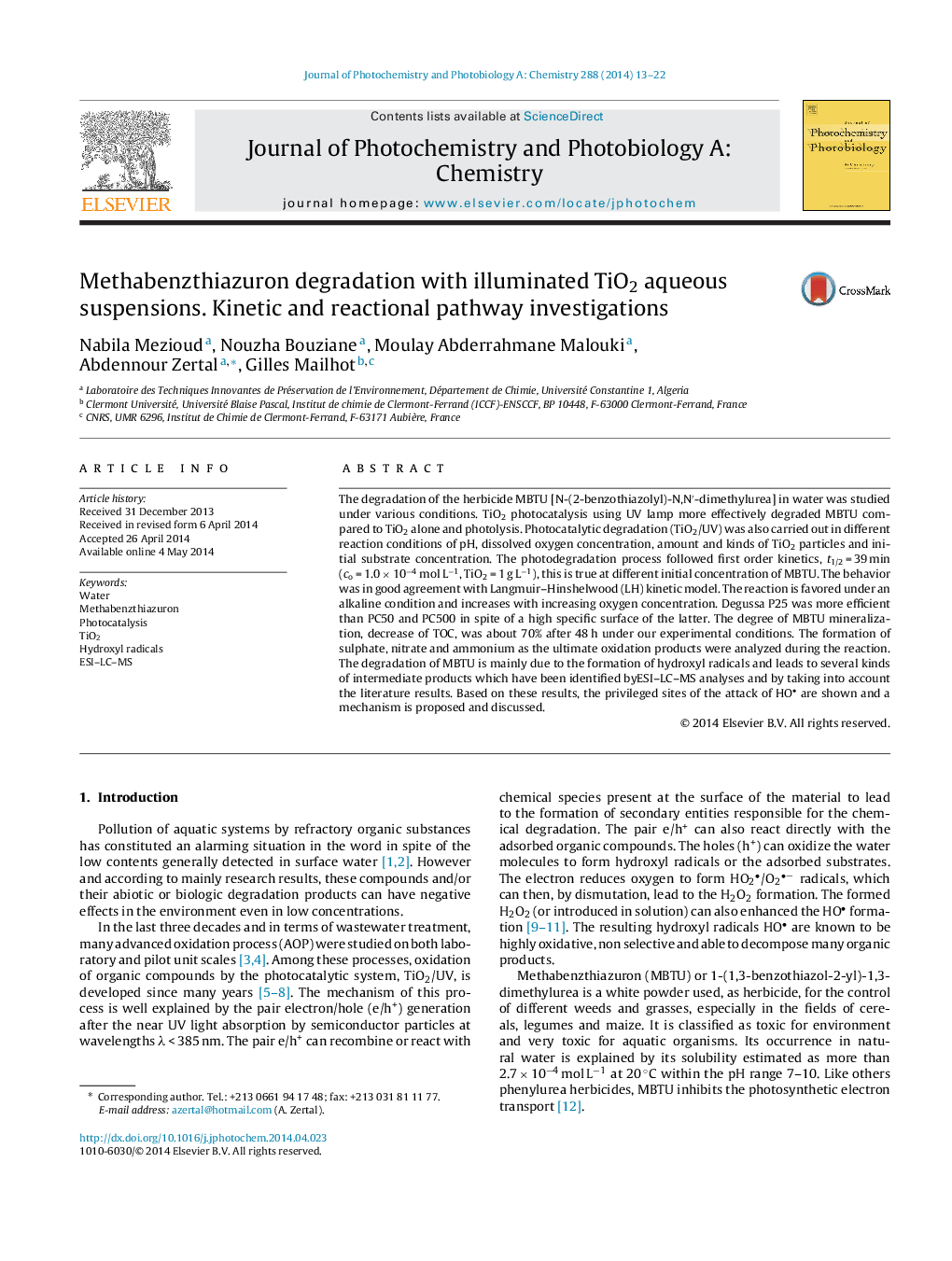| Article ID | Journal | Published Year | Pages | File Type |
|---|---|---|---|---|
| 26538 | Journal of Photochemistry and Photobiology A: Chemistry | 2014 | 10 Pages |
•MBTU degradation was effective during photocatalytic process with TiO2 suspension in water.•Degradation rate of MBTU followed a pseudo-first-order kinetic and was proved to be strongly affected by experimental parameters.•Several intermediates were identified by LC–MS after 30 min irradiation and their formation was related to the production of HO radical.•The degradation pathways mainly involved hydroxylation of the benzene ring and urea function.•MBTU was completely mineralized in 75 h irradiation.
The degradation of the herbicide MBTU [N-(2-benzothiazolyl)-N,N′-dimethylurea] in water was studied under various conditions. TiO2 photocatalysis using UV lamp more effectively degraded MBTU compared to TiO2 alone and photolysis. Photocatalytic degradation (TiO2/UV) was also carried out in different reaction conditions of pH, dissolved oxygen concentration, amount and kinds of TiO2 particles and initial substrate concentration. The photodegradation process followed first order kinetics, t1/2 = 39 min (co = 1.0 × 10−4 mol L−1, TiO2 = 1 g L−1), this is true at different initial concentration of MBTU. The behavior was in good agreement with Langmuir–Hinshelwood (LH) kinetic model. The reaction is favored under an alkaline condition and increases with increasing oxygen concentration. Degussa P25 was more efficient than PC50 and PC500 in spite of a high specific surface of the latter. The degree of MBTU mineralization, decrease of TOC, was about 70% after 48 h under our experimental conditions. The formation of sulphate, nitrate and ammonium as the ultimate oxidation products were analyzed during the reaction. The degradation of MBTU is mainly due to the formation of hydroxyl radicals and leads to several kinds of intermediate products which have been identified byESI–LC–MS analyses and by taking into account the literature results. Based on these results, the privileged sites of the attack of HO are shown and a mechanism is proposed and discussed.
